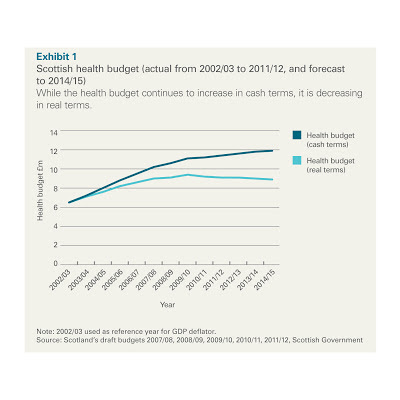The Scottish Government has published the reports from the evaluation of the Health Board elections and alternative pilots. The research describes the statutory evaluation of the pilot projects, arising from the Health Boards (Membership and Elections) (Scotland) Act 2009. Two NHS boards, Dumfries and Galloway and Fife held elections for 10 and 12 members respectively. Two other boards, Grampian and Lothian explored alternative ways of recruiting and selecting two new appointed members each.
The main finding is that it is possible to successfully hold direct elections for NHS health boards and members of the public are prepared to stand in considerable number.
The elections did not radically change the demographics of board members but an approximate gender balance was achieved. In some cases, candidates’ motivations for standing were very different from the motivations described by non-executives who had come through the appointments route. Specifically, those who stood on electoral platforms such as planned hospital closure or transfer of services. Most elected board members were not strongly political (including some with long experience in politics) and acted in ways that were similar to appointed non-executive directors.
Electoral turnout was low. 16 and 17 year olds had notably lower turnout than voters aged 18 or over and only one ran for office. Focus groups suggest that this group felt uninformed about both the role of health boards, and about their ability to stand for election and vote. The costs of mounting the elections for the two boards totalled £773,256. It is difficult to predict the cost for all boards, but it may be £11 to £12m - modest compared to the size of NHS Scotland.
Candidate profiles and election subsequently impacted the way board business was conducted. In one of the elected Boards, votes on issues became more common and dissenting opinions were more likely than previously to find their way into the press. There was also more challenge to Executive Director's.
Alternative pilots that sought to broaden recruitment methods without changing the selection procedure did expand the range of applicants beyond those who apply for appointment under the existing system. The effects of the new board members were much smaller, primarily because they added two people each to large and well-established boards.
An international literature review suggests that the Scottish experience is not unusual; New Zealand, some Canadian provinces, and English Foundation Trusts all had relatively low turnout but did not experience predicted problems with politicisation and division.
The research found that direct elections have both considerable advantages and drawbacks. They directly address issues of local democracy and accountability and thus have the potential to change the way boards function through increasing the level of challenge to Chairs, Chief Executives and indeed the Scottish Government. One counter argument is that elected boards may not be able to function as effective corporate entities. However, the researchers saw no evidence of this during the pilot period.
The research is unlikely to change minds on this issue one way or the other. You either believe that public services should be locally democratically accountable, or believe that they should be run by political appointees and others picked for their expertise.



